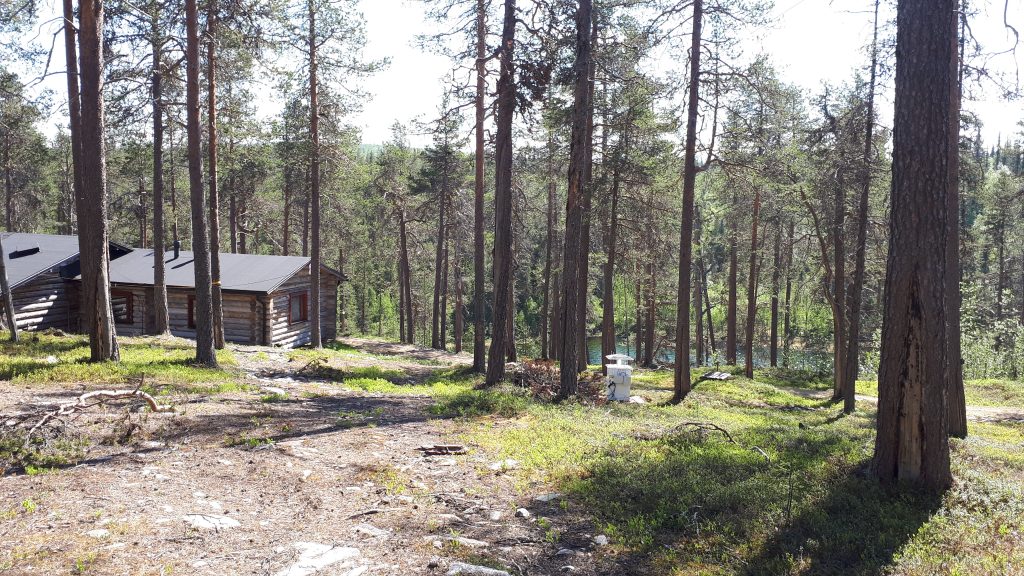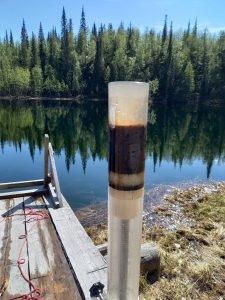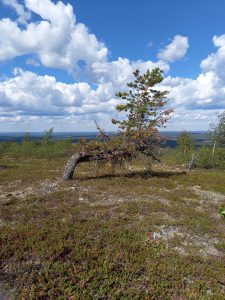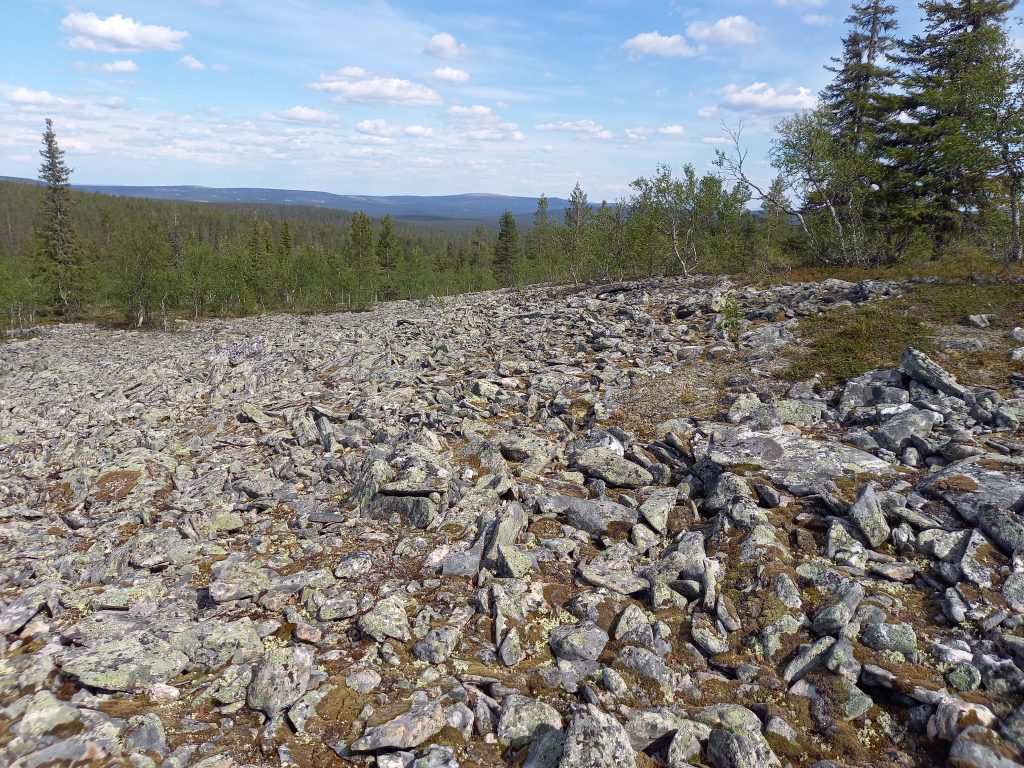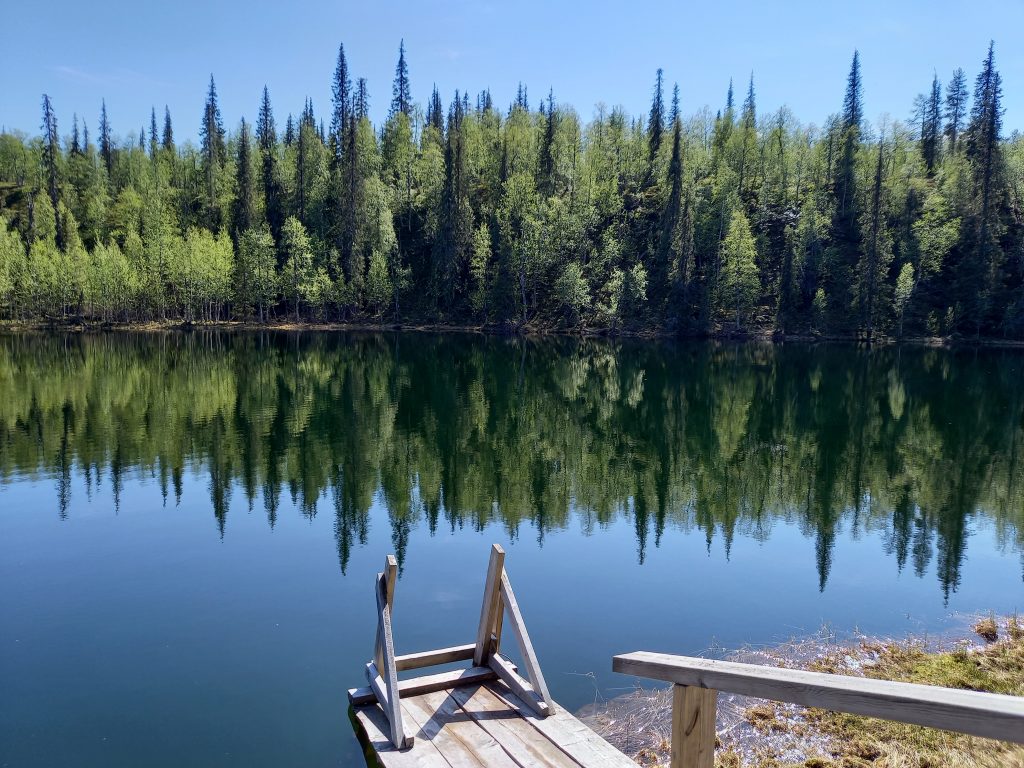by Lilia Orozco and Ana Dauner
(Lilia explains) Paleoecologists collect a sediment core and may start working on the material right away. However, in order to look into the past, it is often useful to look at the present as well. That is the case for our project, where we use data collected from the current lake and catchment as a reference when inferring past conditions. Past summer, our project took us to the research station in Värriö strict nature reserve, eastern Finnish Lapland, where we have an ongoing monitoring program for isotopic composition of precipitation and lake water. In this blogpost, we will tell you about our field experience.
Arrival to the research station was an adventure of its own! Neither of us had a European driver’s license, so we had to carry our equipment in public transportation. This meant 12 hours in the train, an hour and a half in a bus, two hours in a taxi, and 20 minutes on a quad bike, to reach our destination.
(Ana continues) When we first arrived, the immensity and homogeneity of the landscape formed my first impression. At first sight, all I could see was this huge Scots pine (Pinus sylvestris) forest. And I thought: “Um, okay, beautiful, but nothing special”. When we later started to collect samples, I realized how wrong I was! Every lake was located inside a very steep valley – around 40 meters downhill in a 100-meter distance. In addition to the impressive view provided by the steep cliffs, every turn gave a different color explosion.
(Lilia) During the week we stayed in Värriö, we collected water samples from nearby lakes and surface sediment samples from our study site, Lake Kuutsjärvi. Because our visit was in the beginning of the summer, we were joined by the midnight sun. Both Ana and I were born and raised in tropical countries, Mexico and Brazil, respectively, and we got to experience endless summer days for the first time. The nature reserve houses beautiful forests with gigantic old pine trees.
(Ana) Speaking about the sampling campaign itself, it could not have been better! The weather was nice for the whole week, so we did not have to struggle maneuvering with equipment in the rain. The water samples were very easy to collect with the Limnos sampler. The sediment samples took a bit more effort. The HTH sediment sampler did not perforate the lake bottom every time. And perhaps, I can complain a bit about the weather anyway: although the sun was always shining, it was a bit windy, especially in the afternoons. Our boat drifted between sampling attempts, and we had to row to the correct position before each new attempt. A little more work, but the effort paid off and we were able to collect all the samples!
(Lilia) One of the great perks of field work is the possibility to enjoy nature while sampling. We were lucky to have some the extra time to explore the forest around the research station. It was fascinating to see the transition from boreal forest to mountain birch (Betula pubescens subsp. czerepanovii) forest, and finally to subarctic tundra at the top of the fells nearby. The landscape was very beautiful!
(Ana) I also paid attention to the clear change in vegetation towards the felltops. Instead of a dense pack of pine trees, we could only see some sparsely distributed trees, most of them twisted and adapted to the harsh climate. Dwarf-shurbs, such as crowberry (Empetrum nigrum) and blueberry (Vaccinium myrtillus) blanketed the land surface. Unfortunately, it was the beginning of the summer so, no berries for us! But the view was, again, worth the walk. Another interesting and peculiar novelty for me was the “sea of rocks”, more appropriately termed a blockfield or “rakka” in Finnish! On the two hills we climbed, we could see large patches of broken rocks. Almost if a truck had simply deposited them there. Later I learned that the blockfields were produced locally, due to below-surface frost weathering.
(Lilia) Värriö research station is part of our University’s Institute for Atmospheric and Earth System Research (INAR). Professor Mikko Sipilä and researchers Kimmo Neitola and Jukka Kärki along with the staff at the research station hosted us, were very helpful, and kept us out of trouble. The nature reserve hosts wildlife such as bears and wolverines, and has some scarp cliffs, but thanks to their advice, our sampling was a success and we were never in any danger.
(Ana) We also had a chance to visit the SMEAR I (Station for Measuring Ecosystem-Atmosphere relations) atmospheric measurement base in Värriö. It was wonderful to know how the station tracks and measures not only weather, but also aerosols and trace gases.
Altogether, it was a great experience and we hope we get to visit again.
Lilia is a PhD student who took a dip into the cold waters of Lake Kuutsjärvi. Ana is a postdoctoral researcher who loves taking pictures of the landscape.
To see more photos from Värriö Subarctic research station, visit their nature diary.

